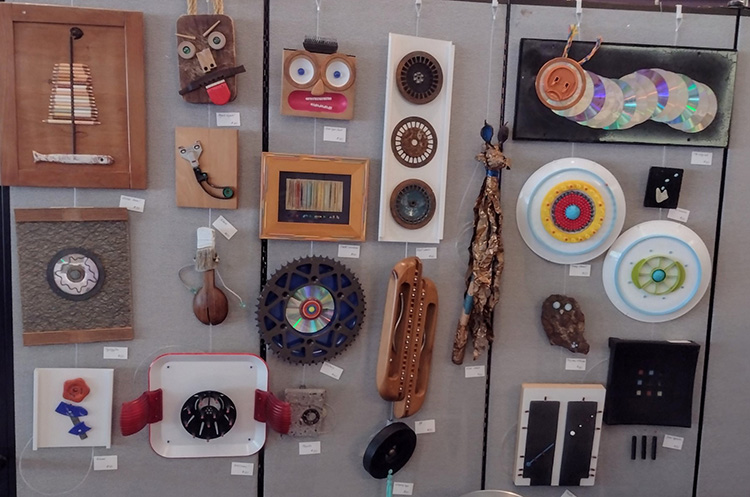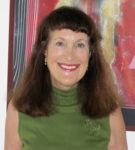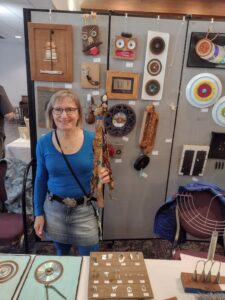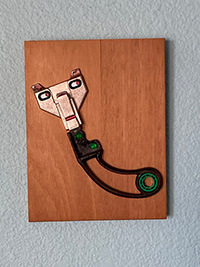
By Mimi Pollack


SAN DIEGO — When immigrants first arrive, everything is new for them, and they must work to repurpose their life. Many volunteers, including Roni Breite, guide them in doing that.
In a similar way, Breite gives new life to discarded objects she finds and fashions them into her own unique designs. The display she had last Sunday at the First Annual Artists’ Showcase at Tifereth Israel Synagogue was fascinating.
The following is our interview which she talks about her art and what inspires her.
Q: What motivated you to start producing art from “found” items?
Long before starting to make this type of art, I would save or pick up things that just looked interesting to me, generally in form and texture. I would see some character, or beauty, in the object, and think, “Someday I’ll make something with this.” My husband would get exasperated with my compulsion to save “junk.”
When my daughter moved out of the house, I took over her room, brought the stored items in from a closet, and started taking them apart and moving them around to see what might emerge. It’s a process of exploration; I never know what I’m going to make in advance. The materials start guiding me as I arrange them. I have a sense of play and meditation as I invent. Then the technical challenge is how to attach things; because my materials are so varied and irregular, it’s often quite hard to figure out how to secure the parts of the design.
I’ve given pieces to friends and family, including custom pieces I’ve made from their own items. But until this Artists’ Showcase, I never publicly showed my art or tried to sell it. I did start to think about showing, because I have more than 100 pieces inside and outside my house and need room for new works!
I look forward to accepting custom work using people’s own special objects. It’s a different kind of challenge — and has the bonus of not adding to all my artwork on my walls.
Q: Have you always been artistically inclined?
I enjoyed drawing and painting as a child but didn’t focus on it. I was more interested in athletics, climbing trees and reading. I took an oil painting class in high school, but many other students seemed so much more talented. I was discouraged and didn’t pursue art for a long time; when I did, it was in three dimensions.
Q. What sort of items do you use?
My raw material includes pieces of rusty metal, broken and rusty tools, colorful wires, single earrings, broken jewelry, plant material, old plates and trays, broken kitchen items, wire, bicycle parts, toys, wood, rocks, cabinet doors, metal roofing, electronics parts, broken guitars, broken brooms and more. I like to take things apart, so their original use is not so obvious.
Q. And how do you choose them?
It’s hard to describe how I choose my materials; something just “calls to me.” I see something, and I just know if it has potential. Recently I was on a bike ride and saw a piece of folded, run-over, pebble-distorted copper sheet on the road and I told my companions “I love that!” and went back to retrieve it from the middle of the road.
Q. How would you describe your art?

I transform formerly useful objects into something entirely different. I make uncommon art from common objects, creating a sense of harmony and whimsy from disparate items. It’s a process of radical re-imagining. Things I start with include rusted, broken, and unusable odds and ends that have some compelling quality that inspires me. Shape, texture, color and often corrosion spark my imagination. Spotting random items and recognizing the potential for art is the first creative step. My art emerges from discovery and playful exploration, then finally, technical problem-solving.
Hopefully, this exhibit will be the first of many more to come. Her type of art would be perfect for Earth Day!
*
Mimi Pollack is a freelance writer based in La Mesa, California. She may be contacted via mimi.pollack@sdjewishworld.com